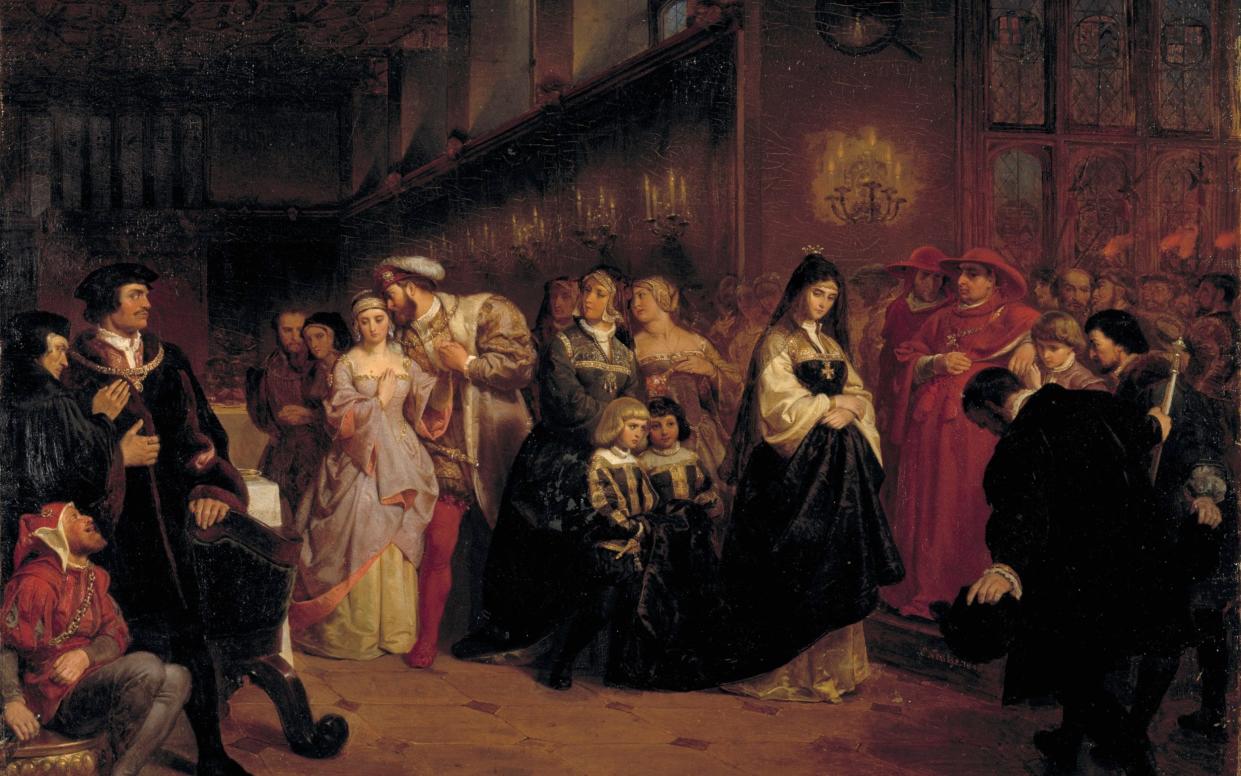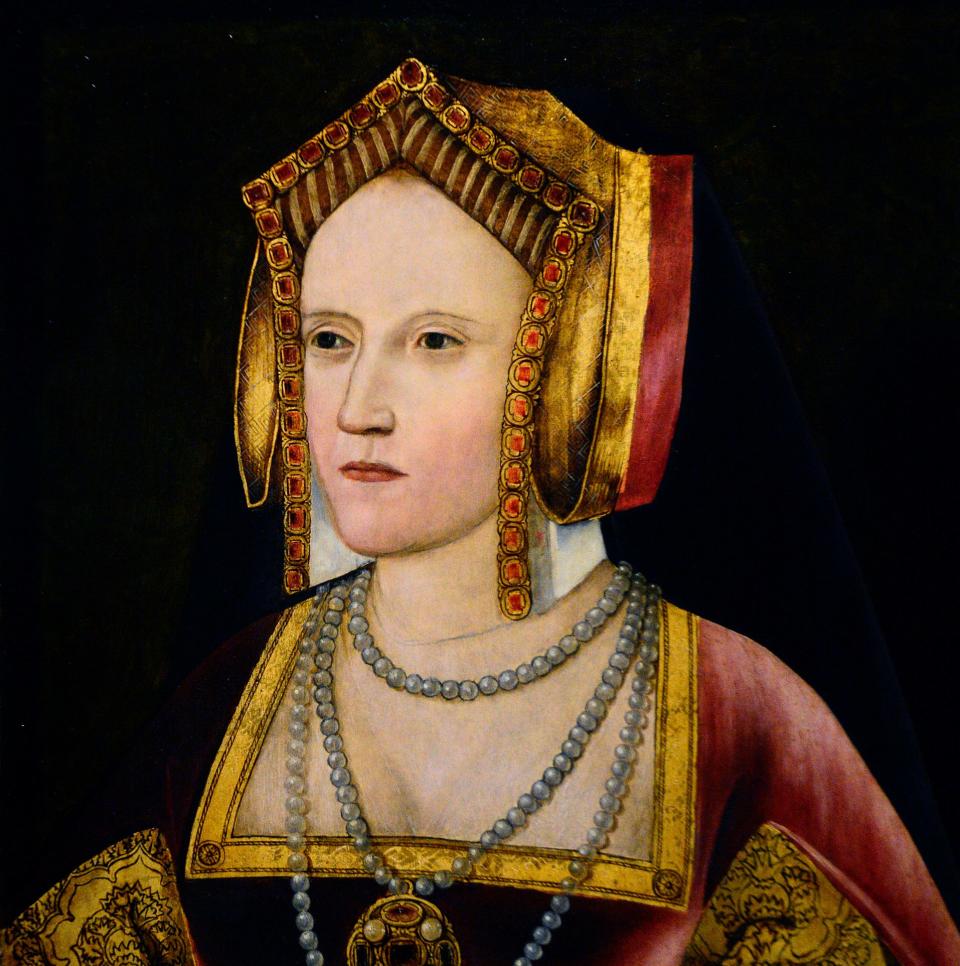The women who gave Tudor queens style, sense – and secrecy about sex

Between 1529 and 1532, investigators working for the Habsburg king Charles V travelled the kingdom of Spain looking for a small group of women. They went to Najera to track down a lord’s wife, and to Toledo to hunt for a nun. They combed Granada’s streets asking after a former slave who was now married to a crossbow maker.
Three decades earlier, all these women had been in England, at the Tudor court of Henry VII. The year then was 1501, and each had worked as an attendant on Catherine of Aragon. They dressed her, sewed with her, and played cards with her. Some even slept in her bed.
All, the investigators reasoned, might therefore be able to help answer one of the hottest diplomatic questions of the day. Back in 1501, had Catherine had sex with Arthur, Prince of Wales, who was then her newlywed husband and heir to the English throne? If the women could say for certain that she had, the present-day king Henry VIII’s marriage to Catherine was (as he claimed) invalid. But if they could swear that she had not, then Henry’s attempts to wriggle out of his marriage and wed his mistress Anne Boleyn were illegal. Catherine might remain the rightful Queen of England. Five more wives tells us which way the argument eventually went. Still, for a moment, it was the ladies-in-waiting who were thought to hold all the answers.
Ladies-in-waiting are a group well represented in Tudor costume dramas, but poorly understood in history. On the television, they’re always there: lace-trimmed extras, scuttling and blushing, whispering and giggling, and eventually weeping when the queens whom they serve are beheaded. Unless one of these ladies sleeps with the king, they’re all of a type: voiceless human furniture.
Yet as Nicola Clark shows in The Waiting Game, that portrayal does these women a grave disservice. Ladies-in-waiting might well be menial servants. Some were indeed royal mistresses. But others were spies, power-brokers and gatekeepers to powerful agents at court. The best could shape domestic, dynastic and even international politics without fluffing their needlework.
Clark is a lecturer at the University of Chichester, whose academic work focuses on women’s role in Tudor politics. She is therefore well placed to comb English, Spanish and French archives for the killer details that permit a reconstruction of the world of female service in the first half of the 16th century. (Despite its subtitle, The Untold Story of the Women who Served the Tudor Queens, the book does not cover the reigns of Mary I and Elizabeth I.) Thus The Waiting Game abounds with names and careers that will be unfamiliar to many readers, and dazzling little nuggets of court life.

One of the stars of Clark’s show is María de Salinas, a young Spaniard who came to England with Catherine of Aragon and outstayed almost all her countrywomen, eventually marrying into the English aristocracy and becoming Mary, Lady Willoughby. Naïve in her early years, María came to occupy such a position of trust at Queen Catherine’s side that the Spanish ambassador felt himself entirely sidelined by her. The queen, he wrote, loved María “more than any other mortal”, whereas he, the ambassador, felt “like a bull at whom everyone throws darts”.
While María de Salinas cosied up to the Queen, other ladies of her type could be found on the king’s side of court – with mixed results. Elizabeth Blount enjoyed being Henry VIII’s mistress, but was packed off to a monastery when she fell pregnant with his bastard son, Henry Fitzroy. Jane Seymour, lady-in-waiting to Anne Boleyn, became queen, but died giving birth to the future Edward VI. Jane Rochford attended Catherine Howard, but was beheaded for treason for having abetted that queen’s adultery.
The rewards of the waiting game were high, but so were the risks, and the insults. At the Field of Cloth of Gold in 1520, Francis I of France kissed all the English ladies of waiting except “four or five that were old and not fair”. It could have been worse. One English writer, seeing Spanish ladies-in-waiting for the first time, called them “hunchbacked, tattered, barefooted, Ethiopian pygmies”. Clark’s eye for details such as these, as well as her instinctive grasp of the 16th century’s treacherous politics, makes The Waiting Game a refreshing tonic to costume drama clichés of the early Tudor court.
Dan Jones’s books include Powers and Thrones: A New History of the Middle Ages. The Waiting Game is published by W&N at £22. To order your copy for £18.99, call 0808 196 6794 or visit Telegraph Books

 Yahoo News
Yahoo News 
